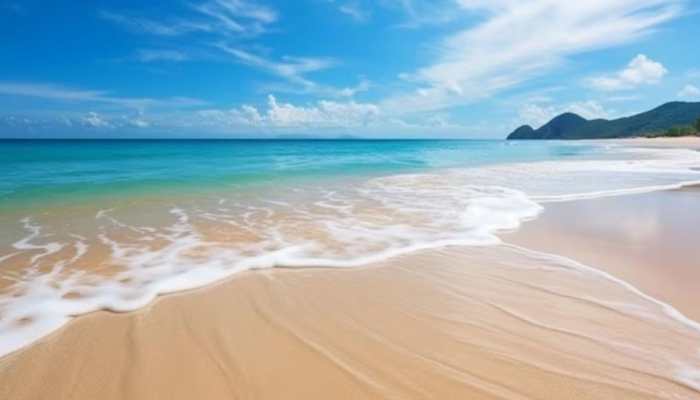Narendra Modi becomes longest-serving non-Congress Prime Minister of India
Currently, he is also fourth longest-serving Prime Minister of India, after Jawaharlal Nehru, Indira Gandhi and Dr Manmohan Singh.
- Narendra Modi on Thursday became the longest-serving Prime Minister in Indian history of non-Congress origin, surpassing Atal Bihari Vajpayee's tenure of 2268 days.
- Currently, he is also fourth longest-serving Prime Minister of India, after Jawaharlal Nehru, Indira Gandhi and Dr Manmohan Singh.
- India's first prime minister Jawaharlal Nehru remains the longest-serving prime minister of India so far.
Trending Photos
)
In yet another career milestone, Narendra Modi on Thursday became the longest-serving Prime Minister in Indian history of non-Congress origin, surpassing Atal Bihari Vajpayee's tenure of 2268 days, all his terms combined. Currently, he is also fourth longest-serving Prime Minister of India, after Jawaharlal Nehru, Indira Gandhi and Dr Manmohan Singh.
Narendra Modi took oath as the 14th Prime Minister of the country on May 26, 2014. He started with his second innings as the PM again on May 30, 2019.
India's first prime minister Jawaharlal Nehru remains the longest-serving prime minister of India so far. His tenure lasted for around 17 years, followed by his daughter Indira Gandhi who served two terms of little more 11 years and nearly five years respectively.
Dr Manmohan Singh served two consecutive terms of five years each. The other non-Congress prime ministers who could not complete their tenure included Morarji Desai (March 24, 1977 -- July 28, 1979), Charan Singh (July 28, 1979 -- January 14, 1980), Vishwanath Pratap Singh (December 2, 1989 -- November 10, 1990), Chandra Shekhar (November 10, 1990 -- June 21, 1991), HD Deve Gowda (June 1, 1996 -- April 21, 1997) and Inder Kumar Gujral (April 21, 1997 -- March 19, 1998).
Narendra Modi has become the fourth longest-serving prime minister just two days ahead of India`s 74th Independence Day. On August 15 he will deliver his seventh Independence Day speech from the ramparts of the Red Fort. Manmohan Singh and Narendra Modi are the two PMs, after Nehru, to have been re-elected to office on completion of a full five-year term.
Under PM Modi's leadership, the BJP-led NDA government has ushered an era of inclusive and development-oriented governance, catering to the aspirations of the farmer, the poor, marginalised, youth, women and neo-middle class. He has introduced many schemes since 2014 and taken major decisions leading India on a new path of development and progress. He started the Make In India and Digital India and implemented the Goods and Services Tax (GST). He also started the Pradhan Mantri Yojna, Swacch Bharat Abhiyaan and Beti Bachao Beti Padhao projects.
PM Modi took the plunge into mainstream politics in 1987 and became the General Secretary of the Gujarat BJP in one year. His organizational skills were behind the Nyay Yatra of 1987 and Lok Shakti Yatra in 1989. These efforts played a major role in the BJP coming to power in Gujarat first for a brief period in 1990 and then from 1995 till date.
He became the National Secretary of the BJP in1995 and in 1998 given the responsibility of General Secretary (Organization), a very important post in the party organization. 3 years later in 2001, the party entrusted him with the responsibility of taking over as the CM of Gujarat. He was re-elected as CM in 2002, 2007 and in 2012.
In 2019, PM set a new record for having 50 million followers on Twitter and is also the most followed Indian on the microblogging site.
Stay informed on all the latest news, real-time breaking news updates, and follow all the important headlines in india news and world News on Zee News.
Live Tv







)
)
)
)
)
)
)
)
)
)
